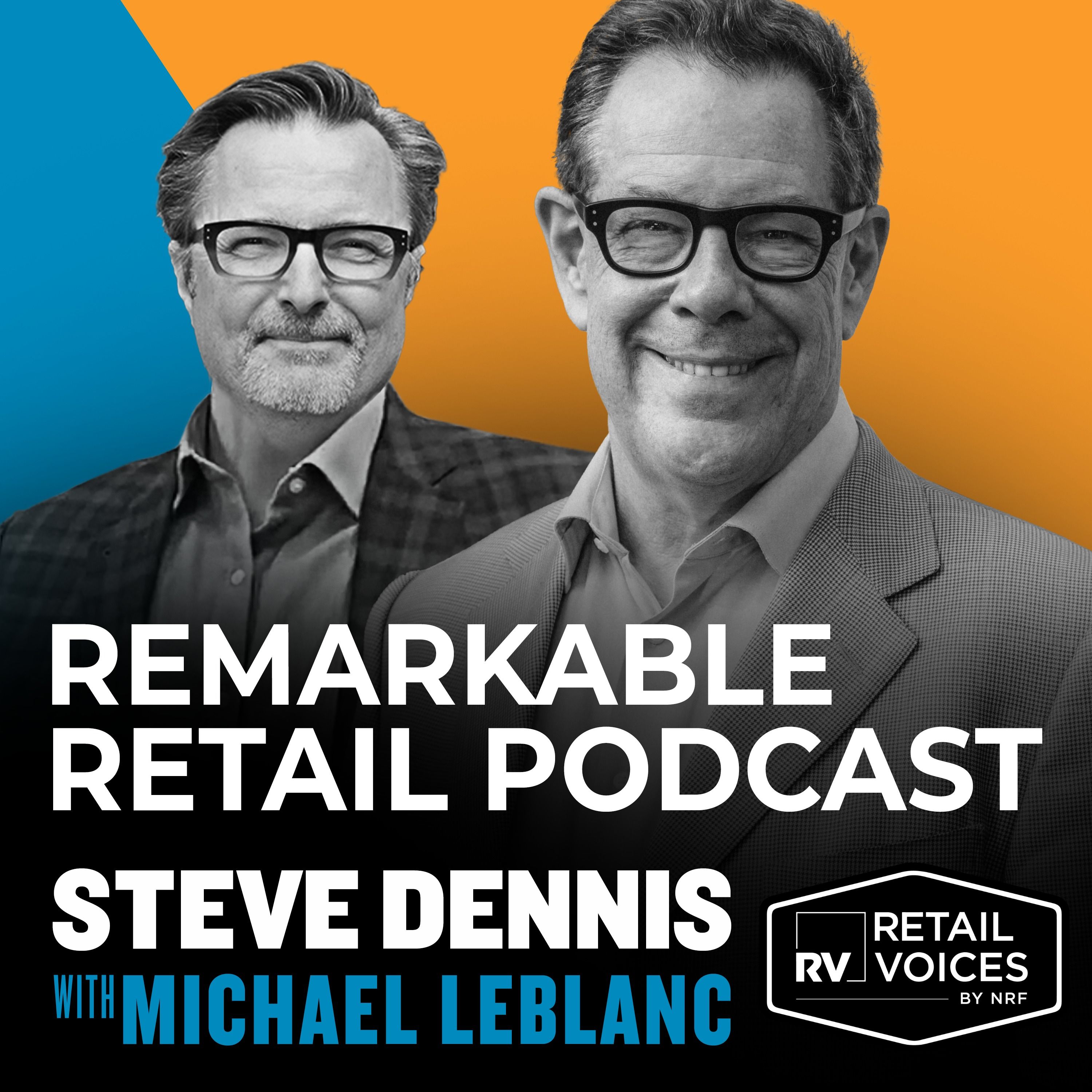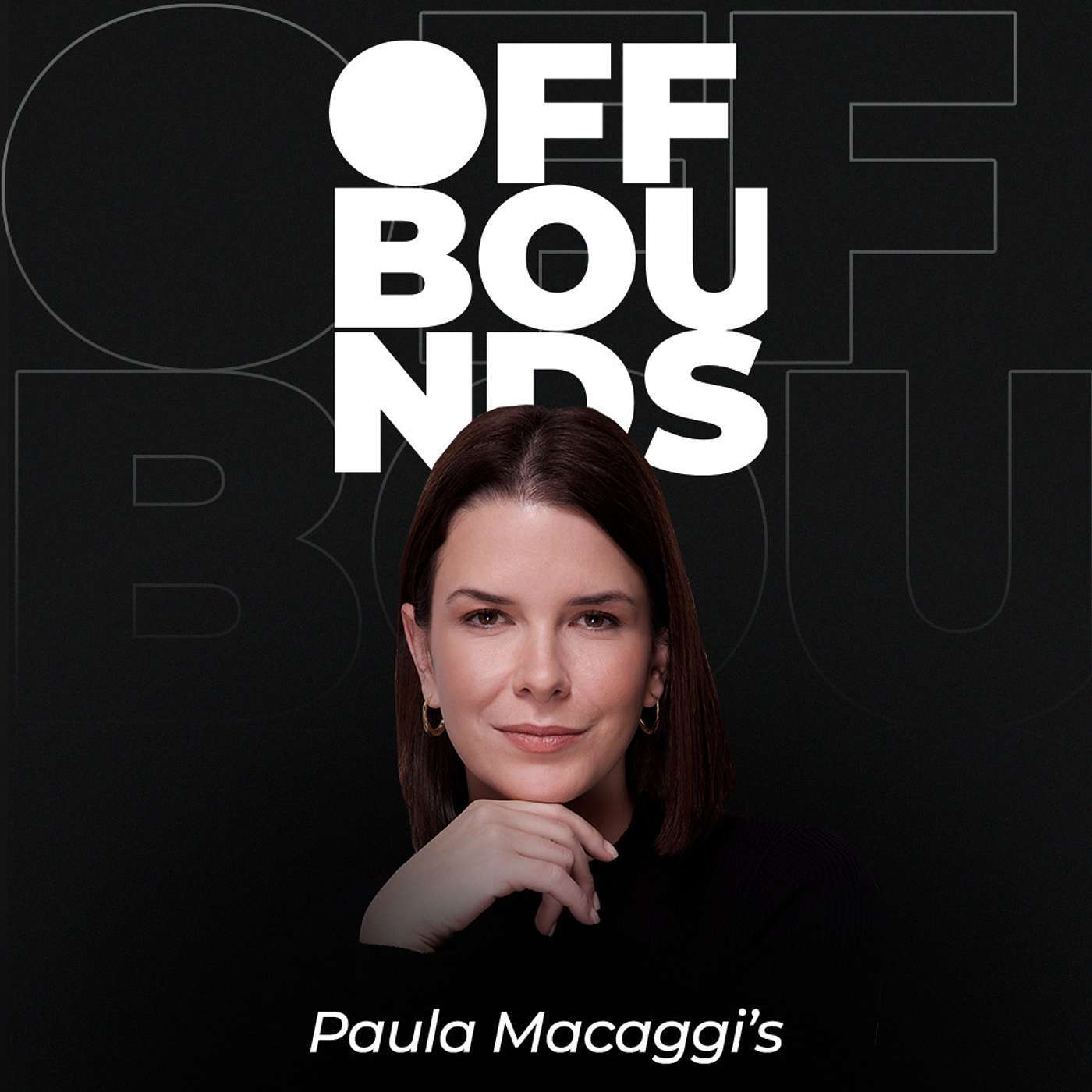
Pricing Heroes: The Retail Pricing Podcast for Practitioners & Executives
Pricing Heroes: The Best Retail Pricing Podcast for Practitioners and Executives
Your go-to pricing podcast for transforming strategy, boosting margins, and leading with confidence.
Pricing Heroes is the leading retail pricing podcast for pricing practitioners and retail executives focused on building smarter strategies, protecting margins, and earning customer trust. Each month, we feature exclusive interviews, case studies, and practical insights to help you implement the most effective pricing strategies for today’s retail environment.
Whether you're managing promotional calendars, navigating price perception, or scaling AI-powered pricing systems, Pricing Heroes offers the expert guidance and real-world perspective you need to lead with confidence.
🎙 Each episode includes:
- Expert Interviews: Candid conversations with top pricing professionals and retail innovators
- Case Study Analysis: Behind-the-scenes strategy breakdowns from across the industry
- Actionable Takeaways: Practical insights you can apply immediately in your organization
We explore the full landscape of pricing in retail — spanning e-commerce and in-store, global brands and regional players, and categories from fashion and grocery to electronics and beyond. Topics include:
- Innovative pricing technologies and emerging trends, like AI-powered pricing platforms
- Data-driven consumer behavior analysis
- Strategic solutions to complex pricing challenges
- Tactics to boost profit margins and market share
- Pricing topics making headline news
- Building and transforming pricing functions
Join a growing community of pricing professionals and industry leaders who tune into Pricing Heroes — the trusted pricing podcast for anyone shaping the future of retail strategy.
🗓 New episodes drop the last week of every month.
📲 Listen on Spotify, Apple Podcasts, Google Podcasts, or your favorite platform.
Sponsored by Competera — the leading pricing platform empowering retailers with AI-driven, customer-centric pricing solutions that maximize profitability while strengthening customer loyalty.
Pricing Heroes: The Retail Pricing Podcast for Practitioners & Executives
Scaling Pricing Across 20 Markets: Building Global Frameworks with Local Freedom at Zooplus with Pooja Gerara
In this episode of Pricing Heroes, we speak with Pooja Gerera, VP Insights and Strategy — formerly VP of Sales and Pricing — at Zooplus, Europe’s leading online pet retailer. Over nearly a decade, Pooja has helped scale Zooplus’s pricing function from a small, experimental team into a data-driven commercial engine spanning 20 European markets. She shares her journey from systems engineering and telecom pricing to leading one of Europe’s most advanced retail pricing organizations, building automation, managing elasticity, and balancing autonomy with control through her “freedom within a framework” philosophy.
Key Topics:
- How a background in technology shaped Pooja’s approach to scalable, automated pricing
- Building Zooplus’s pricing team and evolving from manual to machine-learning models
- Segmenting assortments and applying differentiated strategies across 20 European markets
- Managing competing priorities between pricing, promotions, and sales operations
- Leadership lessons: earning trust, aligning cross-functional teams, and empowering autonomy
- Why elasticity and channel-based pricing can transform traffic and price perception
- The future of e-commerce and AI as the next major disruption in retail pricing
Recommended Resources:
- Thought leaders Pooja follows: Fabian Uhrich, Danilo Zatta, and Chris Herbert
- EPP (European Pricing Platform) events and conferences
Connect with Pooja Gerera on LinkedIn.
----------
Get your free copy of Get Ready for the Future Of Pricing with our A-Z Guide.
For more information about AI pricing solutions, check out our Corporate sponsor Competera.ai.
Aaron: Hello and welcome to Pricing Heroes, a podcast sponsored by Competera. This is a series of interviews with the best-in-class retail pricing experts driving bottom-line metrics for major retail brands and the industry as a whole. Today’s guest is Pooja Gerera. Pooja is the Vice President of Sales and Pricing at Zooplus, Europe’s number one online pet supplier. Over the past nine years, she has helped transform Zooplus’s pricing function into a data-driven, growth-focused operation, scaling across 20 European markets and leading a 60-person team that spans pricing, promotions, forecasting, analytics, and sales operations.
In her current role, Pooja has introduced new pricing models that have driven double-digit revenue growth, while also leading cross-functional efforts to optimize commercial strategy, improve customer acquisition, and align sales planning with board-level targets. Prior to Zooplus, she worked as a systems engineer at Infosys, where she developed pricing tools for enterprise clients, including a major Australian telecom provider.
Pooja, welcome to Pricing Heroes.
Pooja: Thank you, Aaron. Happy to be here.
Aaron: We’re happy to have you. To start us off, would you mind telling us about yourself and how you found your way into pricing?
Pooja: Funnily, I found my way into pricing a good old 14 years back. As you mentioned, I started working as a systems engineer with Infosys Limited, where I was tasked with programming pricing software for a telecom major called Telstra in Australia. That’s how, from the tech side, I found my way into pricing and then into retail following Telstra.
I found a lot of interest in pricing and moved from telecom pricing to helicopter spare parts pricing with Airbus Helicopters, which I loved even more. So I went from telecom pricing to spare parts pricing to now pet food pricing.
Aaron: I’m curious: why did you decide to transition from the technology side into the practice of pricing in retail?
Pooja: While I was working in tech, I had a brief opportunity to work as a business analyst in Melbourne, and I really loved it. That’s when I realized I have strong commercial competence and understanding, and that’s how I transitioned from tech to retail.
Then I decided to pursue my master’s in business administration. While I was doing that, a fantastic opportunity in helicopter spare parts pricing came my way. I joined Airbus Helicopters and wrote my master’s thesis on value-based spare parts pricing. From then on, following the path of pricing, I landed at Zooplus doing pet food pricing.
Aaron: That’s great. Usually our guests do not begin their careers in pricing, but I believe you’re the first one who’s come from tech into pricing. It’s a very unusual background for someone in this field.
Pooja: Indeed, and I do feel having that tech background helps when you go towards building scalable and automated systems. It helps shape overall, holistic thinking toward developing scalable systems.
Aaron: Yeah, you bring that project or product mindset to pricing, which is very helpful for sure. Great. You’ve spent nearly a decade at Zooplus, growing your career from Senior Pricing Manager to VP of Sales and Pricing. Maybe you can explain what that journey looked like for you.
Pooja: When I joined Zooplus, it still felt like a startup, yet it was a very big company. There was always a culture of innovation and experimentation. When I joined, pricing was a three-member team led by Fabian Uhrich. That team was tasked with building a new function called pricing because the company was just starting to realize pricing’s power.
I joined that function. After Fabian left Zooplus, I succeeded him and took the function to the next level. From there, we built our journey toward automating pricing, scaling pricing systems, and building scalable systems across 20 different markets. Then, from pricing, I looked toward the adjacencies around pricing. That’s how I built teams around promotions, and as the company matured, there was a need to structure sales operations and holistic commercial strategy. That’s how I built the teams around sales operations, analytics, and forecasting.
Aaron: That’s really impressive. You came in when there was no dedicated pricing function, and you’ve been part of building it.
Pooja: Truth be told, the pricing function was there, but it was in its infancy. People looking at pricing as a dedicated, serious function—that part was in its infancy. Before that, everyone else was doing pricing: sales managers, category managers, vendor managers. And you can imagine what happens when that’s the case.
Aaron: Of course—that sounds like a mess. No ownership. Very interesting. I’m wondering, to grow from the manager level to where you are today, how were you able to pursue that? Did the opportunities come to you naturally, or did you have to work hard at positioning yourself?
Pooja: I had to fight for it. My first opportunity to transition from pricing manager to the lead of the pricing team came because I said, “I want to do it, and I’m capable of doing it.” Hard work is a prerequisite, but you also need the willingness to go out there and raise your hand.
I would be dishonest if I said I felt completely prepared. I wasn’t. But that’s for someone taking a chance on me to assess. I’m happy I raised my hand. This is also the advice I give to everyone who seeks mentorship: go ahead and say, “I want to do it.” Only once you put yourself into deep waters do you realize your true potential. I also had a great set of mentors at Zooplus who took a chance on me and gave me that opportunity. That’s how I grew into the role.
Aaron: What do you think is your secret skill that has allowed you to excel as much as you have?
Pooja: My superpower is getting along with all kinds of people. I get along with people on the shop floor—the people in the business who run operations—and I also try to understand the instincts of board members, what they’d like, and what they need. My leadership is centered around people, and I think that’s one of my biggest superpowers: people connect with me and genuinely like to work together.
Aaron: That’s great. I’ve spoken with many pricing experts and professionals, and I think the key to success—at least in leadership roles—really does revolve around the ability to interact, have empathy, and understand the objectives of others, then build relationships so you become the hub in a larger network within the company.
Pooja: Well said. Our Chief People Officer uses that reference with me too: “You are a hub that people reach out to.” I believe in the power of people. No organization can succeed unless people and culture are positioned well, thriving, and happy.
Aaron: I’m going to jump ahead to a related question. While at Zooplus you’ve been overseeing functions that often have competing priorities—pricing, promotions, sales operations. How do you structure or lead these teams to work in sync? How do you balance the different objectives of each function to create a unified commercial strategy?
Pooja: There are two approaches: long term and short term. Long term, in a maturing organization, you need a budget model where you plan and allocate budgets for everything. We do this at the beginning of the year and have healthy discussions on what each function needs, what we want to chase this year, and what we want to leave.
However, you can plan anything and still be thrown a curveball—tariffs, for example. So, we also have routines. Weekly, we sit together at the table, including top management—the Chief Sales Officer and the CEO—to debate priorities and jointly make decisions. It’s a quick routine, an hour, but enormously helpful in a business where the competition changes the beat every day.
Aaron: That makes sense: having the long-term vision but staying adaptable and agile.
Pooja: Exactly.
Aaron: You oversee pricing across 20 different European markets, each with its own shopper behaviors, regulations, and competitive dynamics. From a pricing perspective, what’s been the most challenging part of managing that scale?
Pooja: The diversity of the markets. Every market behaves on its own, and you cannot have a one-size-fits-all approach in pricing. We steer toward scalability, but sometimes you have to draw a line between scalability and market customization.
For example, Poland is a very promotion-centric market, whereas the Nordics are not. You have to tune your commercial strategy to each market, and that can hamper scalability and systems development. We found balance by setting up parameters that are scalable and then empowering regional experts to customize those parameters according to market strategy.
Aaron: How much independence do those regional leaders have in making pricing decisions on the fly?
Pooja: Following the budget, they have complete autonomy—within guardrails. They must respect standards and the budget. We call it “freedom within a framework.” There’s a framework, and you have freedom within it, but we can’t allow people to do foolish things. So we set guardrails and quality standards for that purpose.
Aaron: That’s good. Providing the framework and guardrails allows people to feel enabled and independent.
Pooja: Yes. Yet I haven’t seen a single organization where pricing as a function isn’t in conflict. The function itself is inherently conflicting: everyone feels responsible for it, yet no one feels responsible for it. So despite our framework, there are arguments and debates that need review and discussion.
Aaron: You’ve helped introduce innovative pricing models that led to double-digit revenue growth. What made those models innovative or different from what came before?
Pooja: Zooplus was always growing double-digit, so success isn’t fully attributed to pricing alone. What made a difference was preserving EBITDA by being more disciplined in pricing.
First, we stopped the manual approach where anyone could change prices whenever it suited them. That alone saved a good magnitude of margin. Second, we rolled out a framework to segment our assortment and apply different strategies to different parts of the assortment. This is a well-accepted method used by many organizations. We also implemented channel-based pricing. Now we’ll go more toward personalized pricing, and so on.
Aaron: Did you garner any interesting insights from the segmentation process—about your customer base or product behavior—that you didn’t notice before?
Pooja: Elasticity is real. For some long-tail articles where we felt they’d be much less elastic—assuming customers wouldn’t have them top of mind—we still saw elasticity. We had to review what to do with those long-tail articles because we expected more bang for the buck there and were proven slightly wrong. The direction of thinking was correct; we just course-corrected.
Another surprise for me was how effective channel-based pricing can be in driving overall traffic and improving price perception. We experimented with channel-based pricing, which helped traffic development and price perception.
Aaron: When you say channel-based pricing—maybe I have this wrong—I was under the impression that Zooplus is e-commerce only. Is that right?
Pooja: Yes, only e-commerce. What I meant was acquisition channels—shopping ads versus price comparison engines, etc.
Aaron: That makes sense. Determining elasticity can be challenging. Today a lot of companies use AI/ML models to measure it. Are you or your team utilizing machine learning or AI for this?
Pooja: Yes. Our elasticity model was developed by Zooplus’s data science team using machine learning. And it’s not just the elasticity of the individual article; you have to see how customers shift to similar products and brands. So it’s a holistic ML approach, built in-house by the data science team, and we leverage that model.
Aaron: Very cool. When you were implementing these new models and approaches, what was the implementation process like? Was there change management involved? Any pushback or hesitation from leadership or other parts of the organization?
Pooja: When we moved toward fully automated pricing two years back, top management was very supportive. You want strong governance; you don’t want everyone changing prices without accountability.
There were some concerns at the country level: “We’re moving to a new model. What if we lose competitiveness?” We addressed those with a “what-if” FAQ: if X happens, we do Y. We also gave them confidence by offering a rollback option. If needed, they could go back to the good old processes—which no one liked, but the option existed. Fast-forward two years: everyone loves the system, and we didn’t have to roll back. Offering an emergency exit worked.
Aaron: Sometimes pricing teams run A/B tests to prove value before scaling. It sounds like your organization essentially adopted it company-wide but with an off-ramp in case of emergency. Is that right?
Pooja: Yes. We also ran A/B tests alongside, but we still offered the opt-out to markets that felt they weren’t ready for specific reasons.
Aaron: Very cool—and the results showed the new approach worked well.
Pooja: Exactly. There was discomfort because of timing, though. We launched this new pricing system right after the COVID wave ended—so around 2022, and we continued into 2023—when e-commerce tailwinds faded. There was suspicion: “Is performance due to the new pricing model?” We looked at market data and research to see whether issues were market-wide or specific to Zooplus, and we shaped our thinking accordingly.
Aaron: That makes sense. Rolling it out during that period was interesting because of market uncertainty. The benchmark had to be the market itself, not necessarily historical performance.
Pooja: Honestly, if I could go back in time, the ideal window to launch would have been pre-COVID. Everyone would have seen the growth and said, “It’s due to pricing,” funnily enough.
Aaron: Over the past 10 years, retail—especially e-commerce—has evolved a lot. What are some of the biggest changes you’ve seen that have impacted pricing strategy?
Pooja: When I started in pricing in European e-commerce, pricing wasn’t taken very seriously. It was seen as a finance function or even an admin function—putting price tags on products. Then, people started building Excel models, which was the beginning of taking pricing seriously. After that, I saw a lot of in-house pricing development. Product management got involved: how do we unleash pricing’s power for perception?
Now, there are many tools that make pricing scalable and automated. The best e-commerce companies understand pricing end-to-end: scalability, customer perception throughout the journey, and value for money as a discipline that includes pricing, promotions, and loyalty tools working hand in hand. Pricing has evolved from an admin function to taking center stage in many company decisions.
Aaron: So it’s shifted into a way to measure and influence value perception. E-commerce has lots of data, but pricing is just one of many factors, so it can be challenging to measure its exact impact on buying decisions.
Pooja: Indeed. From our studies, pricing stands out as one of the biggest criteria for decisions. You feel it in your wallet. Especially now—uncertain times, tight household budgets—people remember how much they spend on dog food. For FMCG, pricing is more important than ever.
I was reading commentary from Chris Herbert, a well-known pricing speaker, noting that economic times have hit the pricing industry too and some professionals are having a rough time. It’s almost laughable if companies think to trim a function like pricing now. That’s a pathway to losing profits and attention. Pricing should be taken very seriously because customers are looking at prices more seriously than ever.
Aaron: Today there are so many apps that track purchasing behavior. I track all my spending; some bank accounts categorize it automatically.
Pooja: Exactly—and now you don’t even need an app. You can ask ChatGPT where to find the best prices. It’s gotten easier for customers to track what they’re paying and the value for money offered. Companies should invest more in smarter pricing functions that leverage AI and take the function to the next level.
Aaron: I think more intelligent, customer-centric pricing is the future. Companies that don’t embrace it will be left behind as it becomes table stakes.
Pooja: Absolutely.
Aaron: From your perspective, what do you think the next major disruption in e-commerce will be?
Pooja: From what I’m seeing and learning using AI tools, AI is the single biggest disruption. It reminds me of the internet in the 1990s. There’s a lot of halo and hype, but I see day-to-day applications becoming rampant. I think AI will become the new SEO. I can see companies moving budget from paid ads on Google to paid placements within AI tools.
Personally, if I have to buy something, I don’t ask Google. I ask ChatGPT to recommend the best product, run calculations, and suggest where to find it. That shift will define e-commerce strategy.
Aaron: A hundred percent. I’ve been reading about AI shopping agents. Pricing will need to adapt to truly intelligent shoppers—agents that shop on behalf of customers, checking prices across hundreds of competitors simultaneously. What do you do then?
Pooja: It’s a big question involving the role of AI, systems adaptability, and the legal aspects around it.
Aaron: You’ve been in pricing for 10+ years. What have been some of your greatest challenges and successes?
Pooja: One of the greatest challenges has been convincing people to move toward more scalable systems. Another has been explaining to management the power of pricing—especially early on. The third is proving pricing’s impact. It’s difficult to isolate pricing’s effect from everything else. That has by far been the biggest challenge.
Aaron: Final question: what books, podcasts, or other resources would you recommend to our Pricing Heroes community?
Pooja: I don’t do much structured reading now, simply due to time constraints, but I’ve found a lot of fondness for podcasts because you can listen on the move. I’d of course recommend this podcast. I also get a lot of value from interacting with senior pricing professionals in person. EPP organizes great events; I try to attend at least once a year.
On LinkedIn, I heavily follow Fabian Uhrich (currently with Quicklizard, previously BCG)—he’s my mentor and ex-boss—and I’ve learned a lot from him. I also follow Danilo Zatta. I follow Chris Herbert to understand trends in the pricing industry. Earlier in my career, especially for industrial goods and manufacturing, I found value-based pricing very powerful and spent my master’s thesis years reading anything and everything about it.
Aaron: That’s a great list. I really appreciate many of those people. Danilo Zatta has been on this podcast a couple of times, and we’ll probably have him on again soon because I think he recently published or is publishing a new book.
Pooja: Right—he is publishing a new book. That could be something.
Aaron: Great. Well, Pooja, thank you so much for being on the show and sharing your insights with us today.
Podcasts we love
Check out these other fine podcasts recommended by us, not an algorithm.

Pricing Evolution Podcast
Brendan Hodge
Impact Pricing
Mark Stiving, Ph.D.
Remarkable Retail Podcast
Michael LeBlanc, Steve Dennis
The Modern Retail Podcast
Digiday
Let's Talk Pricing Podcast
The Professional Pricing Society
Street Pricing with Marcos Rivera
Marcos Rivera
Rooted in Retail
Crystal Vilkaitis
The FMCG Guys
Dwyer Partners
Retail Transformation Show with Oliver Banks
Oliver Banks


